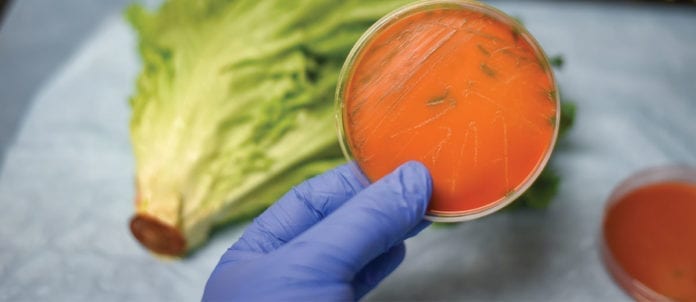CHALLENGE
Changes to Safe Food for Canadians Regulations (SFCR) will undoubtedly mitigate food-safety risks for consumers, but, as the industry adjusts to the new regulations, there are key challenges ahead for operators, suppliers and distributors.
Introduced January 15 by the Canadian Food Inspection Agency (CFIA), the SFCR will further safeguard Canada’s food system by preventing unsafe food from entering the marketplace and allowing for faster removal. In addition, it will reduce the unnecessary administrative burden placed on businesses by replacing 14 sets of regulations with one.
Vince Sgabellone, analyst with Toronto-based NPD Group, says the new rules will have a huge impact on the industry — including extra costs — and that education will be key going forward.
“Traceability isn’t new. [The industry] supports it, but how will it be implemented and what are the costs that will be incurred?” he says. “When there are new costs introduced, those will eventually end up being paid by the restaurants, who will pass those [costs] on to the consumers,” he adds. “Everybody wants safe food and for the CFIA, that’s their mandate, but if this isn’t being communicated to the consumer and the end user who is demanding the traceability and the safe-food practices, it becomes a hidden cost and they’ll have to bear it on their own.”
Producers are also worried about the potential impact to their bottom lines. According to CBC News, a cheesemaker in Nova Scotia was forced to stop shipping his cheese to other provinces, costing him approximately five per cent of his business and a portion of his online sales. Owner Willem van den Hoek told the CBC the change — along with new paperwork and testing requirements for obtaining a national license — would likely force him to lay off staff.
In addition, Sgabelleone fears for the “little guy” — farmers and producers who work directly with chefs to create special dishes in restaurants. At a time when the speed, volume and complexity of food production are at an all-time high and changing consumer preferences continue to dominate market activity, it’s unclear how the regulations, which will be phased-in in stages over the next 30 months, will impact businesses across the board.
OPPORTUNITY
While significant challenges lie ahead for the foodservice industry, there are many opportunities for both operators and suppliers to invest in food-safety strategies. For example, Sylvian Charlebois, Dean of the Faculty of Management at Dalhousie University, says the new rules could lead to more investment in food plants, reporting tools, equipment and software.
“Canada has been the home for a lot of facilities that need some retrofitting and we’ve been really slow in investing and making changes to plants,” he says. “In the U.S., the country’s seen more than 4,000 new food plants in recent years and in Canada, over that same period, maybe 20 or 22.”
Companies such as Maple Leaf Foods, he says, have made huge infrastructure investments. Last November, the company announced a $660-million investment for a new poultry-processing plant in London, Ont., which the company claims is the largest investment in food-processing in Canadian history. The plant is expected to improve food safety, productivity and animal welfare — all sticking points for a consumer base demanding corporate and social responsibility from companies. The plant, slated to open in 2021, is expected to deliver more than 30-per-cent cost savings and a one-third increase in capacity to meet growing demand. In 2011, Maple Leaf Foods invested $395 million in its 402,000-sq.-ft. facility in Hamilton, Ont. to achieve similar goals.
On the operator side, Chipotle Mexican Grill has invested significant resources into food-safety training, education and technology. Following several instances of foodborne illnesses and outbreaks linked to its restaurants, the burrito chain implemented California-based Zenput’s mobile platform — which helps restaurants track operations using a tablet or smartphone — to assist managers in monitoring food-safety issues at all of its locations, including its Canadian units.
The move is part of a plan that’s helped the company grow its shares more than 65 per cent since January 2018. “It provides excellent feedback to our operations teams or food-safety team, so the critical control points in our plans are being followed at 2,500 restaurants,” says Dr. James Marsden, food-safety officer at Chipotle Mexican Grill. “We have about 400 field leaders and every single person has been trained and has about eight restaurants they’re responsible for. It’s an excellent tool and a training initiative that will continue.”
“The economics of food manufacturing [mean] you need to be strategic,” Charlebois says. “It’s been under-appreciated in Canada. Some companies do get it and are investing, but most are managing low margins and aren’t sure if they should make the investment. They’re more in survival mode than anything else.”

















